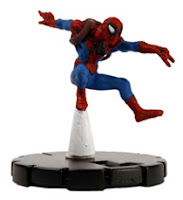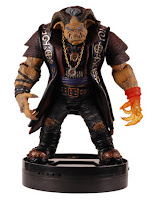 Growing up can be a challenge -- and having a vampire next door certainly doesn't make it any simpler. The Swedish horror-drama Let the Right One In goes beyond the usual vampire motifs to explore the violence, loneliness, and neediness of growing up.
Growing up can be a challenge -- and having a vampire next door certainly doesn't make it any simpler. The Swedish horror-drama Let the Right One In goes beyond the usual vampire motifs to explore the violence, loneliness, and neediness of growing up.Oskar (Kåre Hedebrant) has it rough. A pale, skinny 12-year-old boy, Oskar is bullied at school constantly. He shows an interest in groesome news stories and practices stabbing with a small knife. Things change for Oskar with the arrival of Eli (Lina Leandersson), a cute girl who moves into the apartment next door. While initially shy, she and Oskar soon become friends.
 But Eli and her father are far from normal. Eli only shows up at night, stands in the snow without a jacket (or shoes), and has the window of her room covered up with a poster. Further, her father has been attacking people, hanging them upside down, and draining their blood into a plastic container. You don't need to have seen too many horror movies to know the truth about Eli.
But Eli and her father are far from normal. Eli only shows up at night, stands in the snow without a jacket (or shoes), and has the window of her room covered up with a poster. Further, her father has been attacking people, hanging them upside down, and draining their blood into a plastic container. You don't need to have seen too many horror movies to know the truth about Eli.To its credit, Let the Right One In takes the vampire tale in an atypical direction. While there the usual vampiric elements -- skin smoking when exposed to sunlight, throats being attacked, a creature scampering up a wall -- the movie centers more on Oskar and how his relationship with Eli affects him as a person. Kare displays a disarming vulnerability as the perpetual target of the stronger kids, while Eli strikes an oddly appropriate right note as the cold creature who nevertheless becomes Eli's only friend -- without losing her creepiness. (When asked her age, Eli replies, "Twelve, more or less.")
The pacing of Let the Right One In is sometimes slow, and the "action" part of the movie -- where some drinking buddies are the ones after the mysterious killers in town (and often her victims) -- feels like some forced action. Still, with so many horror movies devoted solely to gore or sadism, Let the Right One In is, flaws and all, some (gotta say it) fresh blood in the horror genre.
Overall grade: B-
Reviewed by James Lynch




























